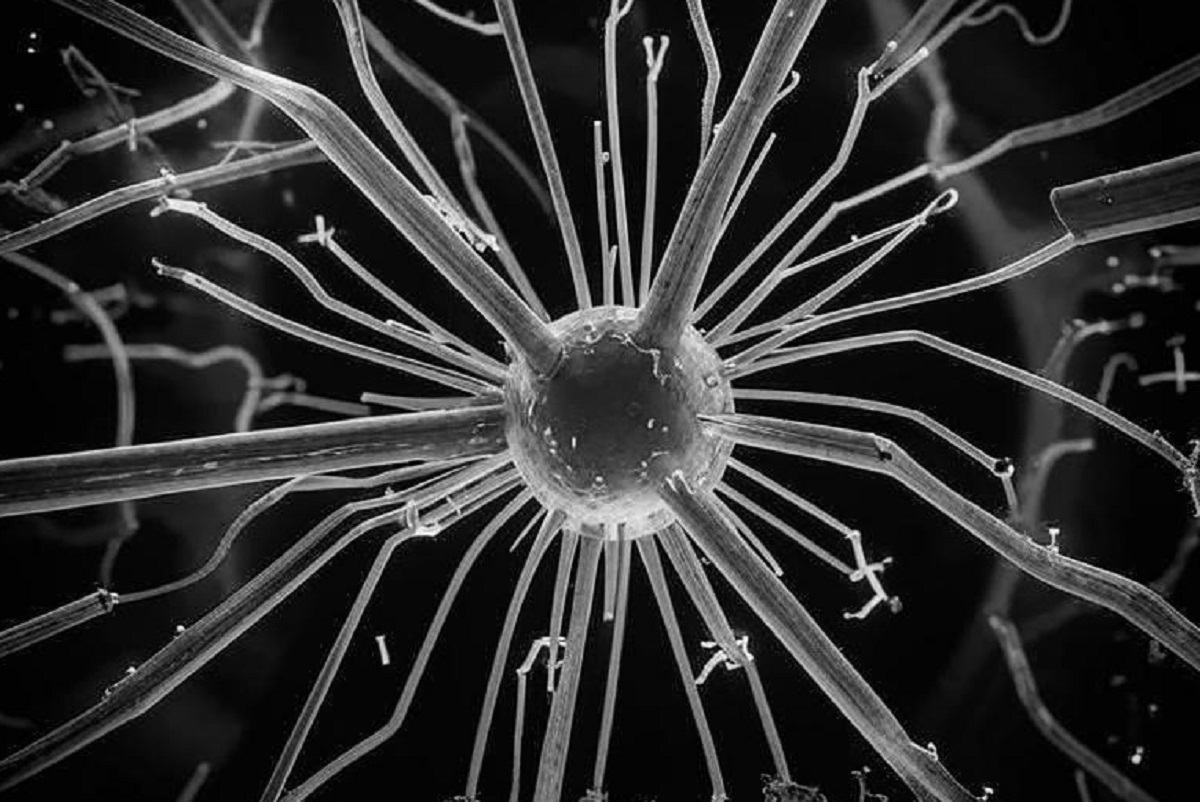Physicists from St Petersburg University triple the efficiency of light emission in multicomponent nanostructures
Researchers from St Petersburg University have developed a method to enhance the photoluminescence efficiency-light emission — of filamentary nanocrystals incorporating a quantum dot and a quantum well. This advancement paves the way for the development of compact, high-performance lasers, sensors, and LEDs capable of delivering increased energy output in smaller dimensions.

Semiconductor structures are widely applicable across various fields of science and technology, owing to their unique properties derived from quantum effects and nanoscale dimensions. These structures are instrumental in developing devices for optoelectronics, photonics, medicine, renewable energy, and other industries. Quantum wells, filamentary nanocrystals (nanowhiskers), and quantum dots, for whose discovery Alexey Ekimov, a graduate of the University, was awarded the Nobel Prize in 2023, are prime examples of such advancements.
The research findings are published in the scientific journal Physica status solidi (RRL) — Rapid Research Letters (pss RRL).
The scientists note that combinations of elements with different dimensions, such as a quantum dot and a quantum well within a filamentary nanowhisker, are particularly intriguing. For example, the researchers from St Petersburg University have demonstrated that such structures can serve as efficient sources of single photons across a broad energy spectrum, making them highly promising materials for quantum technologies. Furthermore, these elements offer considerable versatility, as they can be synthesised on inexpensive silicon substrates, detached from the silicon surface, and subsequently transferred to other materials.
To enhance the efficiency of applications based on these compositions, the physicists from St Petersburg University have developed a method to significantly boost the intensity of light emission from such structures.
"We achieved a threefold increase in the integrated photoluminescence (light emission) intensity of nanostructures with combined dimensionality, based on the InAsP/InP (indium-arsenic-phosphorus/indium-phosphorus) material system, which emit in the near-infrared range," explained Rodion Reznik, Head of the Laboratory of New Semiconductor Materials for Quantum Informatics and Telecommunications at St Petersburg University at St Petersburg University.
The physicists from St Petersburg University are recognised as global leaders in the development of semiconductor nanostructures. The staff of the Laboratory of New Semiconductor Materials for Quantum Informatics and Telecommunications at St Petersburg University are studying new materials for microelectronics: single photon sources, efficient LEDs, solar cells, lasers, nano piezo generators, and their integration with the silicon platform.
All these achievements continue the work of two Nobel laureates to improve quantum technologies for microelectronics: Alexey Ekimov, Nobel Laureate in Chemistry and a graduate of St Petersburg University; and Zhores Alferov, the organiser and Rector of Saint Petersburg National Research Academic University. Rodion Reznik talked more about his work on St Petersburg University's Heinrich Terahertz podcast.
By increasing the intensity of the emission, more light can be generated with much less energy. The physicists from St Petersburg University achieved this outcome by facilitating the interaction of the hybrid element with a specialised SiOx/Ag/Si (silicon oxide-silver-silicon) substrate, onto which it was transferred after synthesis.
The scientists conducted numerical simulation, which revealed that the enhancement in emission arises from the interaction between electron-hole pairs in the nanowhiskers and plasmon polaritons in the substrate. This finding is pivotal for the development of microscale optical devices operating in the near-infrared spectrum, such as lasers, single-photon sources, LEDs, sensors, and more.
St Petersburg University, the oldest university in Russia, was founded on 28 January (8 February) 1724. This is the day when Peter the Great issued a decree establishing the University and the Russian Academy of Sciences. Today, St Petersburg University is an internationally recognised centre for education, research and culture. In 2024, St Petersburg University celebrated its 300th anniversary.
The plan of events during the celebration of the anniversary of the University was approved at the meeting of the Organising Committee for the celebration of St Petersburg University’s 300th anniversary. The meeting was chaired by Dmitry Chernyshenko, Deputy Prime Minister of the Russian Federation. Among the events are: the naming of a minor planet in honour of St Petersburg University; the issuance of bank cards with a special design; and the branding of the aircraft of the Rossiya Airlines to name just a few. To mark the 300th anniversary of St Petersburg University, a postage stamp depicting the Twelve Collegia building and the monument to Count Sergey Uvarov was issued. Also, a Soyuz rocket bearing the symbols of the University was launched from the Baikonur Cosmodrome.
By the decision of the Governor of St Petersburg Alexander Beglov, 2024 was a year of the 300th anniversary of St Petersburg University in St Petersburg. On the day of the University’s 300th anniversary torches were lit on the Rostral Columns on the Spit of Vasilyevsky Island. St Petersburg University flags were raised on the Palace Bridge. The city public transport was decorated with the University’s symbols. During St Petersburg’s City Day celebrations in May 2024, St Petersburg University acted as a participating venue. Additionally, the University launched a website dedicated to the anniversary. The website contains information about outstanding University staff, students, and alumni; scientific achievements; and details of events held as part of the celebration of the 300th anniversary of the University.

